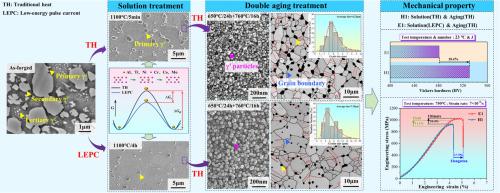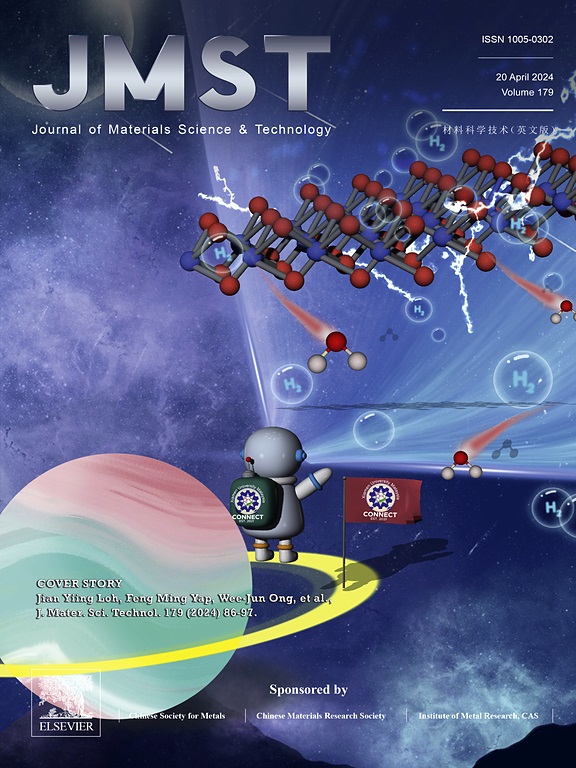Effect of low-energy pulse current on the microstructure and properties of a Ni-based superalloy
IF 11.2
1区 材料科学
Q1 MATERIALS SCIENCE, MULTIDISCIPLINARY
引用次数: 0
Abstract
This study proposes a low-energy pulse current (LEPC) rapid solution treatment method, which can dissolve more primary γ′ phase in a shorter time and effectively suppress abnormal growth of grain, thereby successfully achieving microstructure optimization and property enhancement. The microstructure analysis showed that, compared with the 62.5% dissolution rate of the standard traditional solution treatment (1100 ℃/4 h), LEPC achieved an 88.9% dissolution of the primary γ′ phase in just 5 minutes at the same temperature. Furthermore, due to the rapidity of the LEPC treatment and its “targeted dissolution effect” on the γ′ phase, excessive growth of grain was effectively suppressed, resulting in grain sizes comparable to those obtained with traditional solution treatment. Mechanical property testing indicated that the alloy treated with LEPC had a hardness of 531 HV at room temperature, while the yield strength, tensile strength, and maximum strain reached 993 MPa, 1030 MPa, and 5.1% at the service temperature (750°C). Compared to the standard traditional solution treatment, these properties were improved by 10.4%, 11.1%, 10.4%, and 17.5%, respectively. Finally, theoretical calculations revealed that the non-thermal effects of LEPC reduced the dissolution-free energy by approximately 49.4 kJ/mol and increased the diffusion coefficient by about 76 times, which was the fundamental reason for the accelerated dissolution of the primary γ' phase.

求助全文
约1分钟内获得全文
求助全文
来源期刊

Journal of Materials Science & Technology
工程技术-材料科学:综合
CiteScore
20.00
自引率
11.00%
发文量
995
审稿时长
13 days
期刊介绍:
Journal of Materials Science & Technology strives to promote global collaboration in the field of materials science and technology. It primarily publishes original research papers, invited review articles, letters, research notes, and summaries of scientific achievements. The journal covers a wide range of materials science and technology topics, including metallic materials, inorganic nonmetallic materials, and composite materials.
 求助内容:
求助内容: 应助结果提醒方式:
应助结果提醒方式:


